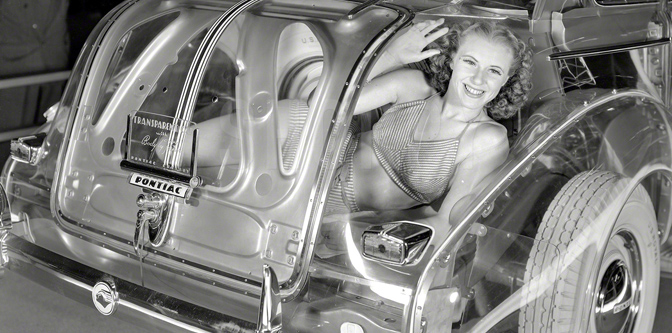Looking Ahead Through Plexiglas…

The late 1930s is one of the high water marks for car design and innovation in America. We were coming out of the Great Depression, Art Deco and Streamline design was all the rage, and technology was moving forward at a rapid pace… The War in Europe was something we just read about in the paper and shook our heads. The Rohm & Haas Chemical company had actually invented acrylic glass in the late 1920s, bringing it to the market as ‘Plexiglas’ in 1933, and then found a way to showcase it for automotive applications when GM premiered the 1939 Pontiac Ghost Car for the World’s Fair that year. For Rohm & Haas it was a testament to the unlimited shapes that could be formed with their proprietary plastic, and the strength of the material in large applications. For Pontiac, it was a prime crowd pleaser as no one had ever witnesses a transparent vehicle before, outside of comic books.
World War II provided the perfect chance for Plexiglas to really prove it’s worth in gun turrets, nose sections, etc. Now here’s where my case for Plexi on traditional cars begins- After the war. Besides a few clear license covers over sunk-in plates, the only early post-war hot rod or custom I can think of that used major Plexiglas components would be GNRS Hall of Fame member Ken Fuhrman’s ’29 A Roadster. His late 40s-built hot rod had a fully transparent hood to show off the full-race Flathead. Nobody ever made a Plexiglass Carson top? Sure, it would be hot as Hades if the sun was out, but how cool would that look??
We’ve got to skip all the way to the early 60s for bubble tops of Darryl Starbird or Big Daddy Ed Roth.





